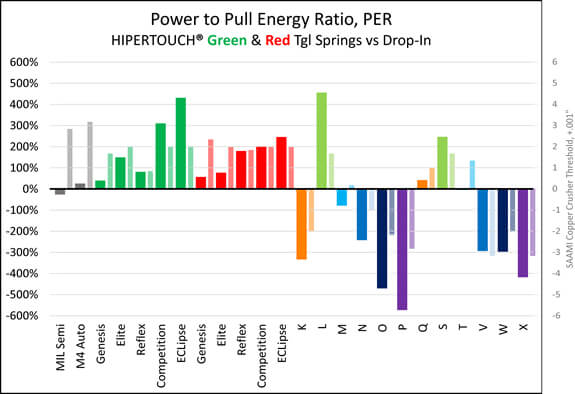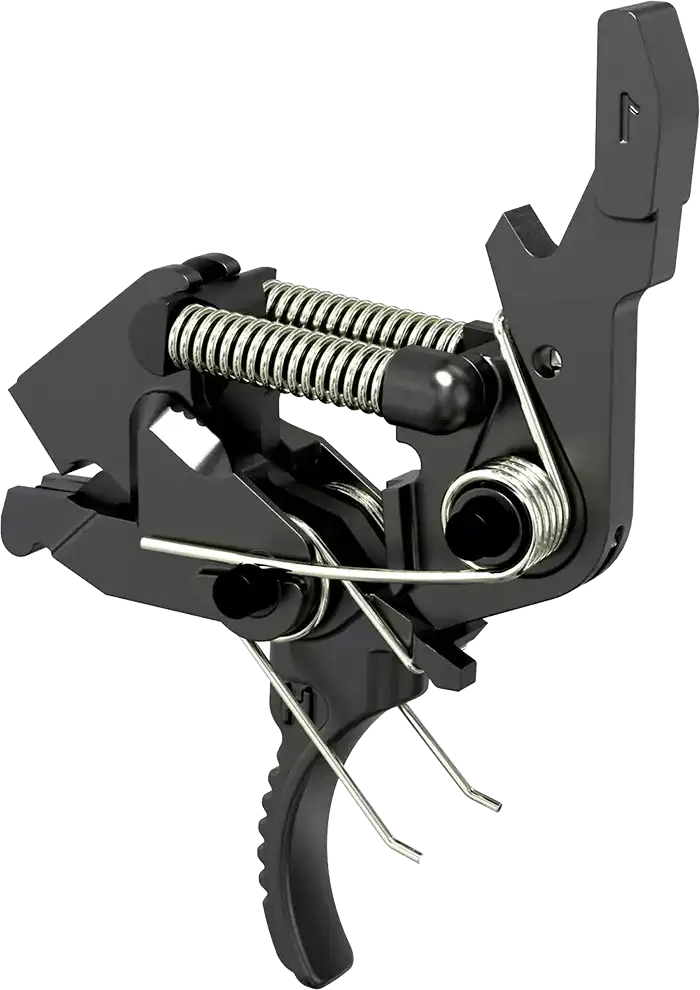We Got It, A Trigger Metric That Works (pun intended)
We, like everyone else, have struggled with things like pull weight and creep. When we buy triggers, we think we bought the one we wanted, only to find out that what was advertised as low weight, or “no creep,” wasn’t real. Either we were lied to, or we didn’t understand what the numbers were supposed to tell us. We’ve been writing about this in our series of technology white papers we’ve been calling HIPERTECH Bulletins or high-performance technology white papers at www.hiperfire.com/hipertech.
We started out telling readers about HIPERFIRE’s patented design features that reduced pull weight without sacrificing hammer strike power. A compromise some triggers designers made to reduce the pull weight but led to LPS, or light primer strikes. We asked, why would anyone design, must less buy, a trigger that felt “good,” but didn’t go bang?
Next, we measured the trigger weight and creep for many triggers, including HIPERFIRE’s. We remarked that trigger manufactures emphasized weight, but not creep. We showed readers that weight alone could be misleading when creep was ignored. We then combined weight and creep into pull energy. This is the single best measure and expression of what we “feel” as the effort, or work (another engineering quantity that means the same as energy).
Finally, we measured hammer strike power using the SAAMI copper crusher standard.
We combined the copper crusher data with pull weight, in this case, the maximum weight over the creep distance as measure with TriggerScan® instrumentation. The combination was a ratio, a metric or parameter that divided the copper crusher data for each trigger measured by the maximum weight. We then plotted the ratios for triggers in three different trigger type groups. What we saw didn’t provide what we expected compared to our experience with the triggers. We were not satisfied.
The plot below is our best single parameter description of what we as shooters actually “feel” when pulling a drop-in trigger and what makes the rifle to bang. Here we plot the ratio of the copper crusher hammer strike measurement by the trigger pull energy that includes weight and creep. Inspect it. Digest it. Believe it. Read HIPERTECH #7, coming out in a few days to understand what we understand. It will take the confusion out of your AR trigger buying decision(s).

The bottom line, or the zero (0%) line
- Bars below the zero (0%) line represent triggers that LPS.
- Bars above the zero (0%) line represent triggers that bang.
- Bars at the 100% line, are twice as good as MIL-spec, 200%, 3X as good, etc.
- The lighter, smaller width bars to the right of the wider bars, indicate the SAAMI copper crusher data from earlier HIPERTECHs. These better qualify the respective contribution that data makes to the PER ratio calculations.
HIPERFIRE’s standard?
Compare HIPERFIRE’s triggers to the others. See the difference? Does this PER metric tell you what’s essential? We think it does. Of course, we have a bias. The bias isn’t to buy our trigger because…it’s buy a trigger that does what you want, make the rifle go bang, and feels good. You are that judge. Demand from your supplier the information that best assists your buying decision. All we will say at this writing is that our customers like what they feel. It’s because we make sound design decisions that best reflect what shooters want in their triggers. Again, you are the judge.








